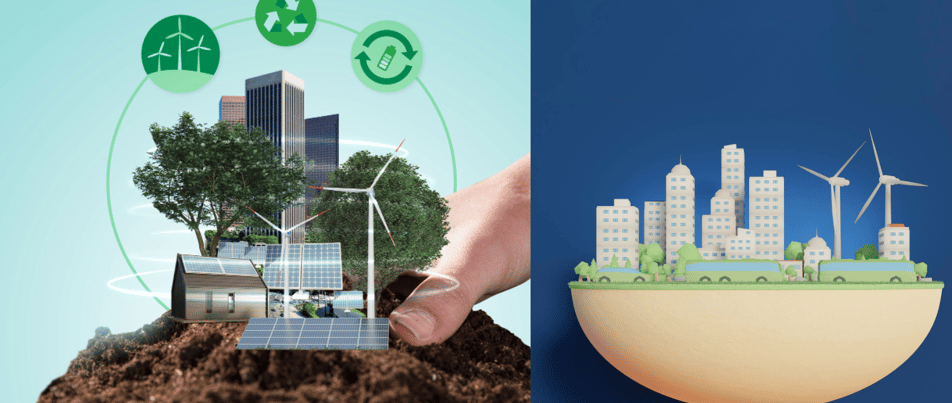6 Reasons Why Sustainable Building Practices Are the Future of Construction
Advancements in sustainable construction and changing the world of construction in a very positive way!
Modular Home and Pool Express
5/7/20242 min read


The future of construction is rapidly turning towards Eco-friendly practices as society increasingly values sustainability. Eco-friendly construction, also known as green building, places emphasis on environmental responsibility and resource efficiency throughout the building process. From financial advantages to environmental preservation, here are six reasons why Eco-friendly construction is shaping the future of the industry.
1. Cost Efficiency
Despite initial perceptions of higher costs, Eco-friendly construction offers significant long-term savings. By prioritizing energy efficiency, water conservation, and sustainable materials, these buildings can drastically reduce utility bills and maintenance expenses over time. Leading the charge in this sector is modular steel panel construction, which maximizes both cost-effectiveness and sustainability. Additionally, various governments and organizations provide incentives, tax credits, and grants to encourage the adoption of green building practices, further enhancing financial benefits.
2. Environmental Preservation
Eco-friendly construction places a premium on preserving natural resources and minimizing environmental impact. Through the use of sustainable materials, waste reduction, and efficient construction methods, these buildings help conserve resources like water, wood, and energy. Moreover, Eco-friendly construction aims to curb pollution and mitigate harm to ecosystems by integrating environmentally friendly design features and technologies. By opting for Eco-friendly methods, builders contribute to environmental protection and climate change mitigation.
3. Health Enhancements
One of the most compelling reasons to embrace Eco-friendly construction is its positive impact on human health. Traditional building materials often result in poor indoor air quality, leading to respiratory problems and other health issues. In contrast, Eco-friendly buildings prioritize non-toxic, low-emission materials such as light gauge steel and incorporate ventilation systems that promote clean air circulation. By fostering healthier indoor environments, Eco-friendly buildings support occupant well-being and productivity, making them more desirable places to live and work.
4. Regulatory Compliance
With the growing emphasis on environmental sustainability, building regulations are becoming increasingly stringent. Many jurisdictions have adopted green building standards and codes that mandate specific Eco-friendly practices and certifications. By adhering to these regulations, builders ensure compliance with environmental laws and demonstrate their commitment to sustainability. Moreover, obtaining green building certifications like LEED can enhance a building's marketability and value.
5. Rising Market Demand
There's a burgeoning demand for Eco-friendly buildings among consumers, businesses, and investors. As awareness of environmental issues grows and concerns about climate change escalate, more people are seeking sustainable living and working spaces. Eco-friendly buildings offer a plethora of benefits, including lower operating costs, healthier indoor environments, and reduced environmental impact, making them increasingly appealing to prospective buyers and tenants. Builders who prioritize Eco-friendly construction can capitalize on this market demand and gain a competitive edge in the real estate industry.
6. Innovation and Technological Advancements
Technological advancements are revolutionizing Eco-friendly construction practices. Researchers and engineers continually develop new sustainable building materials, construction techniques, and energy-efficient technologies to enhance the performance and affordability of Eco-friendly buildings. From high-performance insulation to smart energy management systems, these innovations enable builders to construct more sustainable and resilient structures that meet the needs of modern occupants. Modular steel panel construction stands at the forefront of advanced building technology, utilizing AI and robotics to deliver precision unmatched by traditional building techniques. By embracing innovation, builders can stay ahead of the curve and deliver cutting-edge Eco-friendly buildings that meet the demands of the future.
Conclusion
In summary, Eco-friendly construction represents the future of building, offering myriad benefits for both the environment and society. From cost efficiency and environmental preservation to health enhancements and market demand, there are compelling reasons to embrace sustainable building practices. By prioritizing Eco-friendly construction, builders can create healthier, more resilient, and more sustainable buildings that meet the needs of current and future generations.
All Rights Reserved: 2021-2024
Offices: Tampa - Istanbul - Hong Kong
